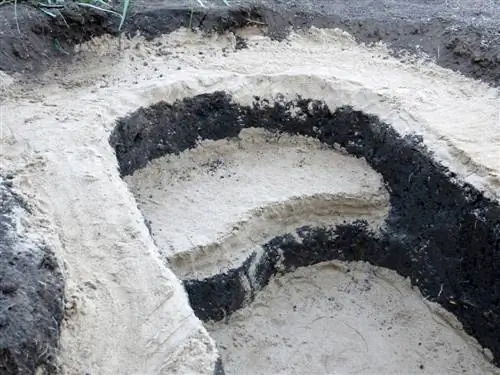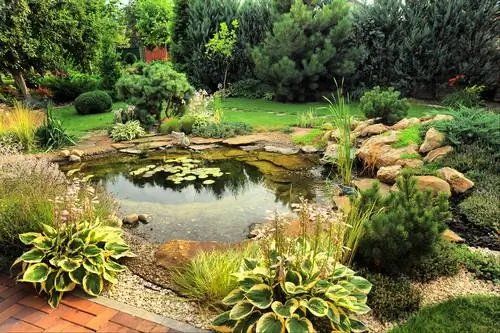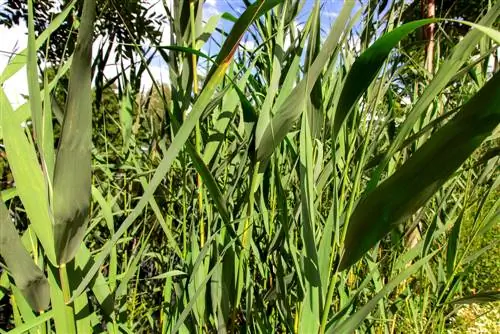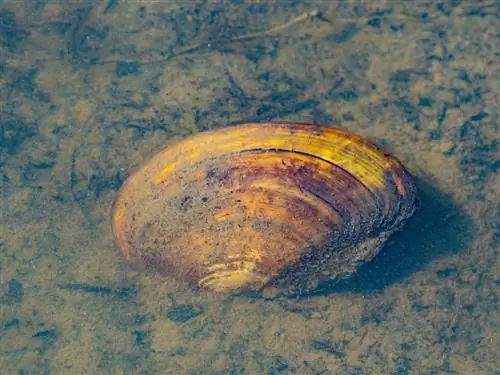- Author admin [email protected].
- Public 2023-12-16 16:46.
- Last modified 2025-01-23 11:20.
The cattail (Typha), like the reed (Phragmites australis), grows naturally on the banks of many lakes and in boggy areas. Sometimes there is confusion when differentiating between the two types of plants and the corresponding terms.
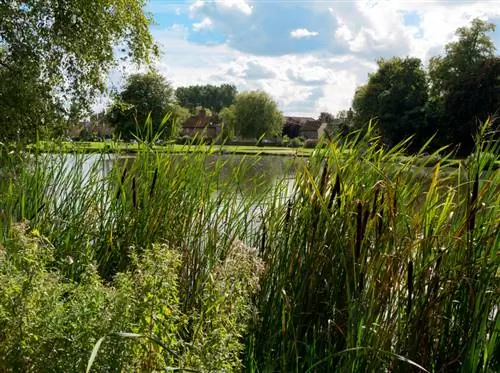
What is the difference between cattails and reeds?
Cattail (Typha) and reed (Phragmites australis) are two species of sweet grasses that grow in boggy areas and lakes. Both are well suited as garden pond plants because of their natural habitats, nutrient extraction, winter hardiness and privacy protection function. However, you should choose cattails to avoid damage to pond liners.
Explanation of terms: reeds, cattails and reeds
In general usage, “reeds” are not only understood locally as the characteristic shore zones of many lakes, which, with their dense, stalk-like vegetation, serve as breeding grounds for rare bird species. The generic term is also usually used to describe all plants that spread rampantly in swampy subsoil (usually in a rather acidic environment) and are cut in dried form in autumn as a decorative element or as material for privacy mats and roof coverings. While cattails and reeds differ in appearance, both genera belong to the family of sweet grasses (Poaceae).
Properties of cattails and reeds
Bulrushes and reeds are also popular for planting in garden ponds, as they have similar properties:
- Creating natural habitats for insects and reptiles
- Removal of nutrients from water
- perennial, hardy plants with little care required
- natural privacy screen at the bathing pond
Since sweet grasses such as reeds and cattails (popularly known as lamp cleaners) are strong nutrient consumers, they easily contain strong algae growth as a result of water eutrophication without chemical agents. In autumn or at the beginning of spring, the dried stalks from the previous season can be cut off near the ground and used as a privacy screen or as a cover for frost-sensitive plants.
Selection for the garden pond: reed or cattail?
Optically, it is a question of taste whether you would rather plant cattails or reeds on your garden pond. However, in the past, many owners of liner ponds in the garden reported damage to the pond liner caused by the roots of the reeds. Since the rhizomes of the cattail are less pointed than those of the reed, damage to the pond liner is less likely. However, if you have a large population of voles in your garden, the cattail can also cause damage to the pond liner: after all, the starchy, thick rhizomes of the pennisetum are an all too tempting snack, for which the voles probably also make holes from time to time gnaw into the pond liner.
Tip
Bulrushes and reeds are about equally strong in predatory competition. However, you can protect other plants in the riparian zone from being displaced if you only plant cattails and reeds in plant baskets or specially demarcated areas.



